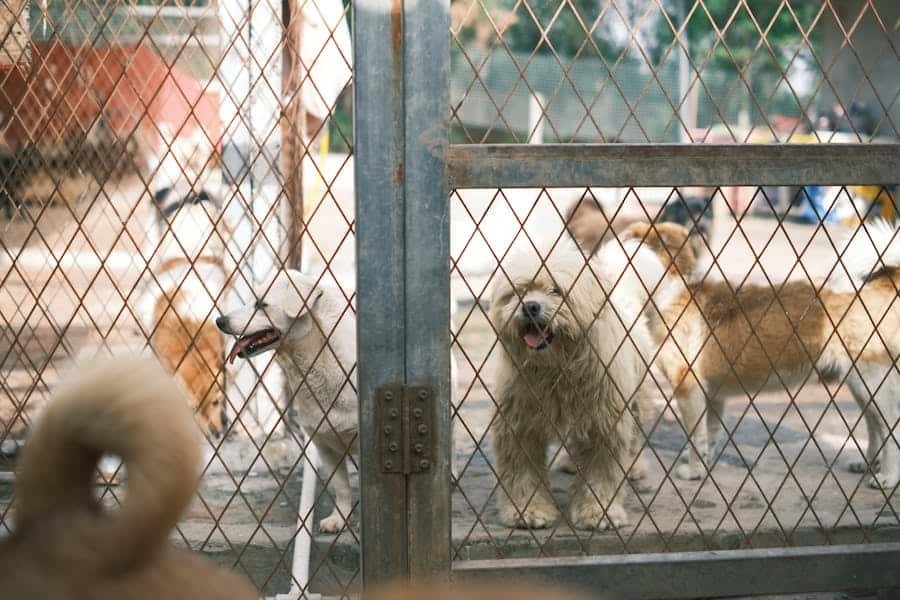How To Cover Mud In The Yard For Dogs: A Guide To Covering Yard Mud For Dogs
Share
Maintaining a clean and comfortable outdoor space for your beloved canine companion is essential for their well-being and your peace of mind. However, if you’ve ever grappled with muddy paws and messy fur after every outdoor adventure, you know the challenges of keeping a mud-free yard for dogs; in this article, we’ll explore practical strategies and solutions to help you tackle the perennial mud problem in your yard, ensuring a happier and healthier environment for you and your four-legged friend.
How Do You Cover Mud In The Yard For Dogs?
To cover mud in your yard for dogs, follow these steps:
- Evaluate The Problem Areas:
Begin by conducting a thorough assessment of your yard. Pay close attention to the areas where mud tends to accumulate. Note the locations where your dog frequently roams, plays, or digs. Understanding these trouble spots will help you create a targeted mud management plan.
- Improve Drainage:
Proper drainage is crucial for preventing mud in your yard. Start by ensuring that your yard is correctly graded. This means the ground should slope away from your home’s foundation, directing water away from the yard.
Additionally, consider installing gutter systems on your house’s roof and downspouts to carry rainwater away from the yard. This prevents excess water from saturating the ground and creating muddy conditions.
- Choose Dog-Friendly Ground Cover:
High-traffic areas in your yard may benefit from specific ground cover options that are resilient and easy to maintain.
Artificial turf is an excellent choice because it provides a mud-free, grass-like surface that dogs can enjoy without making a mess. Gravel and stone pathways allow water to permeate, reducing mud buildup. Wood chips or mulch can also be used in designated areas to create a comfortable surface that remains relatively mud-free.
- Limit Access:
Consider installing fences or barriers to protect delicate areas of your yard, such as a pristine lawn or flower beds. These can effectively limit your dog’s access to these regions, directing their activities toward less vulnerable areas with lower mud risk.
- Regular Yard Maintenance:
Consistent yard maintenance is essential for preventing mud from becoming a significant problem. Regularly rake and reseed grass in areas that endure excessive wear and tear. This promotes healthy grass growth and minimizes mud formation. Fill holes and ruts to maintain a level surface that discourages water accumulation.
- Paw Cleaning Stations:
Paw cleaning stations near entry points to your home are practical solutions to minimize mud tracking indoors—place mats or rugs where your dog can walk before entering the house. Offer brushes or wipes to remove mud from their paws. Shallow containers with water can be used for rinsing off excess mud. Training your dog to use these stations can significantly reduce the mess inside your home.
- Use Dog Boots Or Paw Protectors:
Consider outfitting your dog with boots or paw protectors during wet or muddy conditions. These accessories create a barrier between your dog’s paws and the muddy ground, preventing mud from sticking and being carried indoors. Ensure the boots fit comfortably and securely to encourage your dog to wear them.
- Encourage Healthy Play And Exercise:
Dogs often contribute to mud problems by digging or running excessively in muddy areas. To address this, designate specific play and exercise zones in your yard where your dog can engage in these activities without creating mud issues. Adequate exercise can also help reduce restlessness and destructive behavior.
Preemptive Measures To Prevent Mud
Preemptive measures to prevent mud in your yard for dogs are crucial for maintaining a clean and enjoyable outdoor space. Here’s an expanded explanation of these measures:
Proper Landscaping And Grading:
One of the fundamental steps in mud prevention is proper landscaping and grading. Ensure your yard has the correct slope away from your home’s foundation to facilitate water drainage. This prevents water from pooling and creating muddy areas. Consider regrading your yard or installing swales and trenches to direct water away from high-traffic zones where your dog plays. Installing gutter systems and downspouts on your home can also help divert rainwater away from your yard, reducing the likelihood of muddy conditions.
Drainage Solutions:
Addressing drainage issues is vital to preventing mud. Invest in effective drainage solutions such as French drains, dry wells, or gravel trenches to channel water away from problem areas. Installing permeable pavers or grids in walkways and play areas allows water to pass through the surface, minimizing mud buildup.
Dog-Friendly Ground Cover:
Choose ground cover materials that are resistant to mud and easy to clean. Synthetic grass provides a mud-free, resilient surface that dogs can enjoy without the mess. These materials allow water to drain through, reducing mud accumulation. Ideal for designated play areas, wood chips or mulch offers a comfortable surface that stays relatively mud-free.
Limiting Dog Access:
Install fences or barriers to restrict your dog’s access to sensitive areas or parts of the yard prone to mud. Designating specific play zones can help preserve mud-free areas. Create a designated path for your dog to enter and exit the yard, reducing their chances of running through muddy areas.
Dog-friendly ground cover options
When choosing dog-friendly ground cover options for your yard, there are several materials to consider. These ground covers are comfortable for your dog, help prevent mud, and provide easy maintenance. Here are some popular dog-friendly ground cover options:
- Artificial Turf:
Artificial turf is an excellent choice for a dog-friendly ground cover. It mimics the look and feel of natural grass without the mud and maintenance hassles. It’s durable, easy to clean, and resistant to wear and tear caused by your dog’s activities. Synthetic grass provides a comfortable surface for your dog to play on, allowing urine to drain through. Regular rinsing and occasional brushing to remove debris keep it clean and odor-free.
- Gravel Or Stone Pathways:
Gravel or stone pathways are ideal for areas with heavy foot traffic. They allow rainwater to permeate through, reducing mud buildup and creating a stable, mud-free surface.
These materials come in various sizes and colors, allowing you to choose a look that complements your landscape. Regular raking and replenishing can help maintain their effectiveness.
- Wood Chips Or Mulch:
Wood chips or mulch are commonly used in designated play areas for dogs. They provide a soft and natural surface that is gentle on your dog’s paws. These organic materials also absorb moisture, helping to keep the ground drier. Regularly replenishing the wood chips or mulch can help maintain their appearance and functionality.
- Rubber Mulch:
Rubber mulch is an alternative to organic mulch and wood chips. It’s made from recycled rubber and provides a cushioned surface that is easy on your dog’s joints. Rubber mulch is resistant to decomposition and doesn’t attract pests, making it a low-maintenance option. It’s also available in various colors to suit your aesthetic preferences.
- Pavers Or Tiles:
Interlocking pavers or tiles made from materials like concrete or rubber can create a durable and mud-free surface. They are beneficial for creating defined pathways and play areas.
These surfaces are easy to clean with a hose or pressure washer and can withstand your dog’s activities.
Limiting Dog Access To Specific Areas
Limiting your dog’s access to specific areas in and around your home is a crucial aspect of responsible pet ownership. It serves various purposes, including ensuring your dog’s safety, safeguarding your property, and maintaining a clean and organized living environment. Here, we will explore several broad strategies and considerations for effectively managing your dog’s access.
- Indoor Limitations:
Indoors, you can establish boundaries using baby or pet gates. These gates block off rooms or areas you don’t want your dog to enter. They are handy for spaces like bedrooms, bathrooms, or areas with fragile or valuable items. Crate training is another indoor strategy that allows you to confine your dog to a safe and controlled space when you’re unavailable to supervise. An appropriately sized and comfortable crate can serve as a secure den for your dog.
- Outdoor Restrictions:
Outdoors limiting access can be achieved through physical barriers like fencing. A secure fence is essential for keeping your dog safely contained within your yard and preventing them from wandering into unsafe areas or onto the road. If your property allows, you can create designated play areas within your yard using fencing or other barriers. This approach offers your dog space for exercise and play while protecting other parts of the yard from wear and tear.
- Training And Commands:
Training your dog to respond to verbal commands like “stay,” “leave it,” or “off” can be highly effective in controlling their movements. With consistent training and positive reinforcement, you can teach your dog where they are allowed to go and what areas to avoid. Training should focus on redirecting your dog’s behavior and rewarding them for following your instructions. This positive approach helps your dog understand and respect boundaries.
Final Word
In conclusion, effectively limiting your dog’s access to specific areas is essential for their safety, your property’s protection, and a well-maintained living environment. Whether through indoor tools like baby gates, outdoor solutions like fencing, or training and commands, setting boundaries contributes to a happy and healthy coexistence between you and your canine companion. A balance of love, care, and responsible management ensures a harmonious living arrangement for you and your furry friend.
FAQ’s
Why Is Mud A Problem In My Yard For My Dogs?
Mud can be problematic in your yard for several reasons. It poses a cleanliness issue, as it can dirty your dog’s paws and lead to muddy tracks inside your home. Mud also creates a breeding ground for bacteria and can potentially cause health problems for your dog. Additionally, muddy yards can be challenging to maintain, resulting in an unsightly and messy outdoor space.
How Can I Identify The Areas Where Mud Is A Problem In My Yard?
Observe your dog’s behavior to identify mud-prone areas and note where they spend the most time. Look for signs of mud, such as wet patches or areas with sparse or damaged vegetation. Pay attention to spots where water tends to accumulate after rainfall. These are often the high-mud zones that require attention.
What Are Some Practical Ways To Prevent Mud In My Yard?
Preventing mud involves a combination of landscaping and maintenance strategies. Properly grade your yard to ensure adequate drainage, install gutter systems, and create designated play areas using dog-friendly ground covers like artificial turf, gravel, or mulch. Limiting access to certain areas and using paw-cleaning stations can also help minimize mud issues.

















